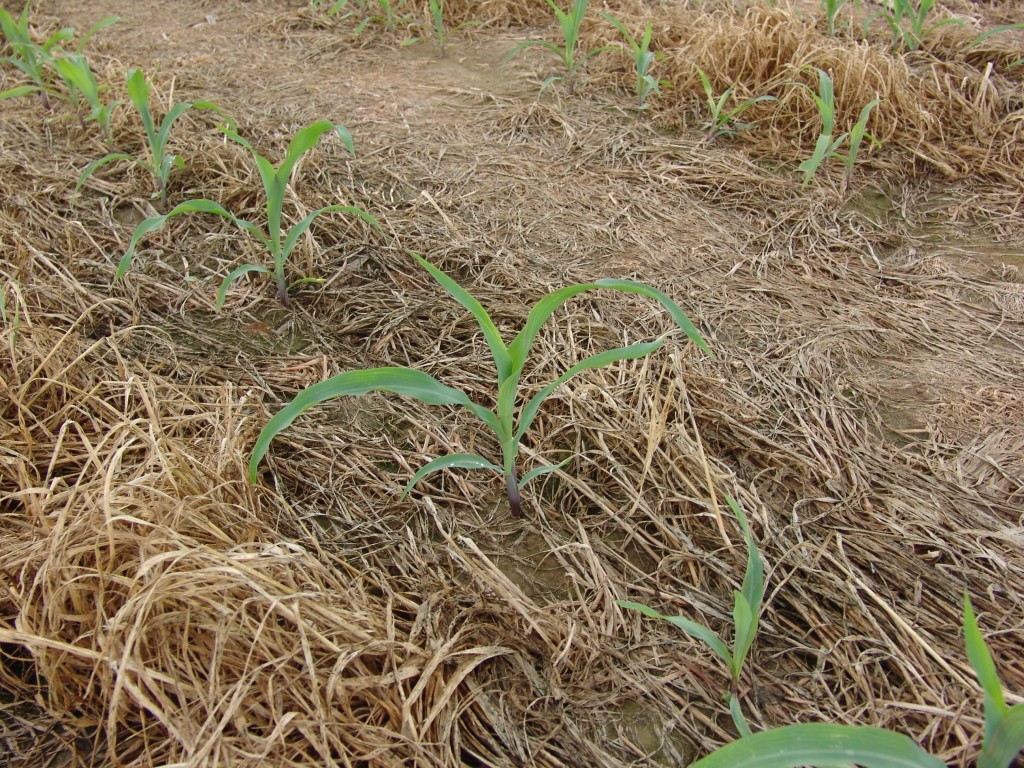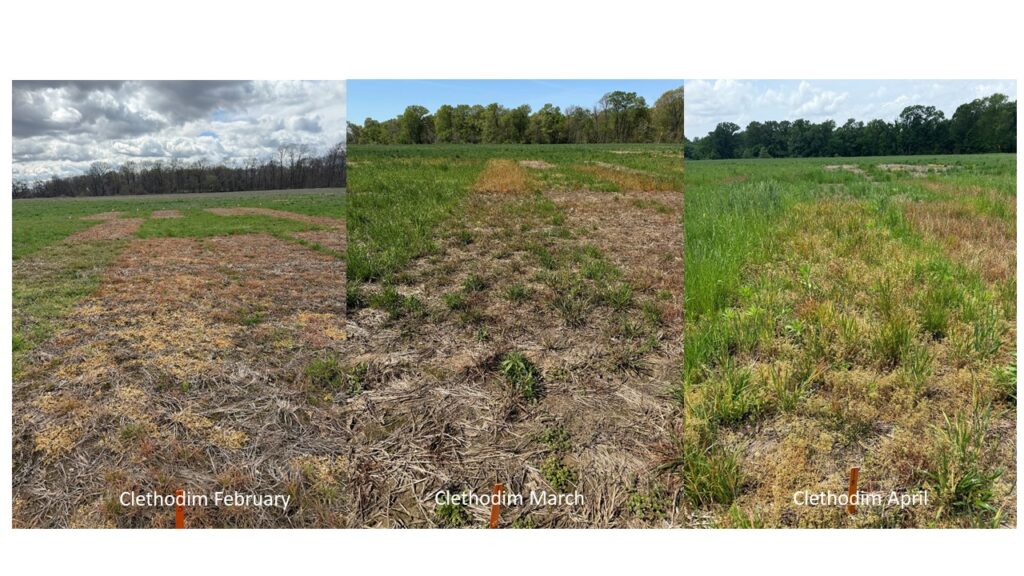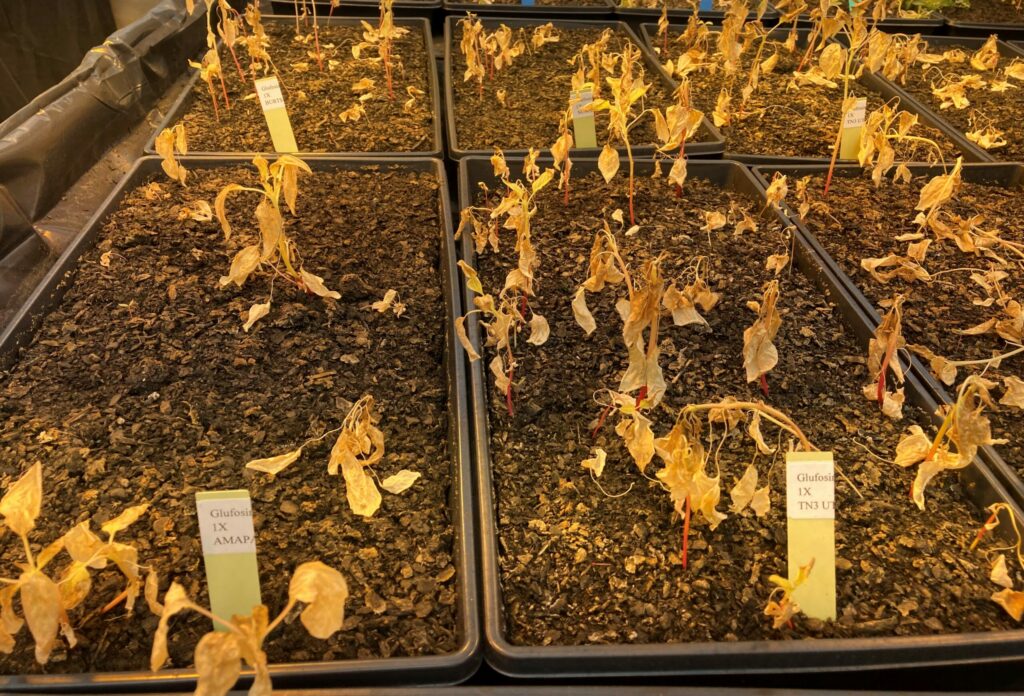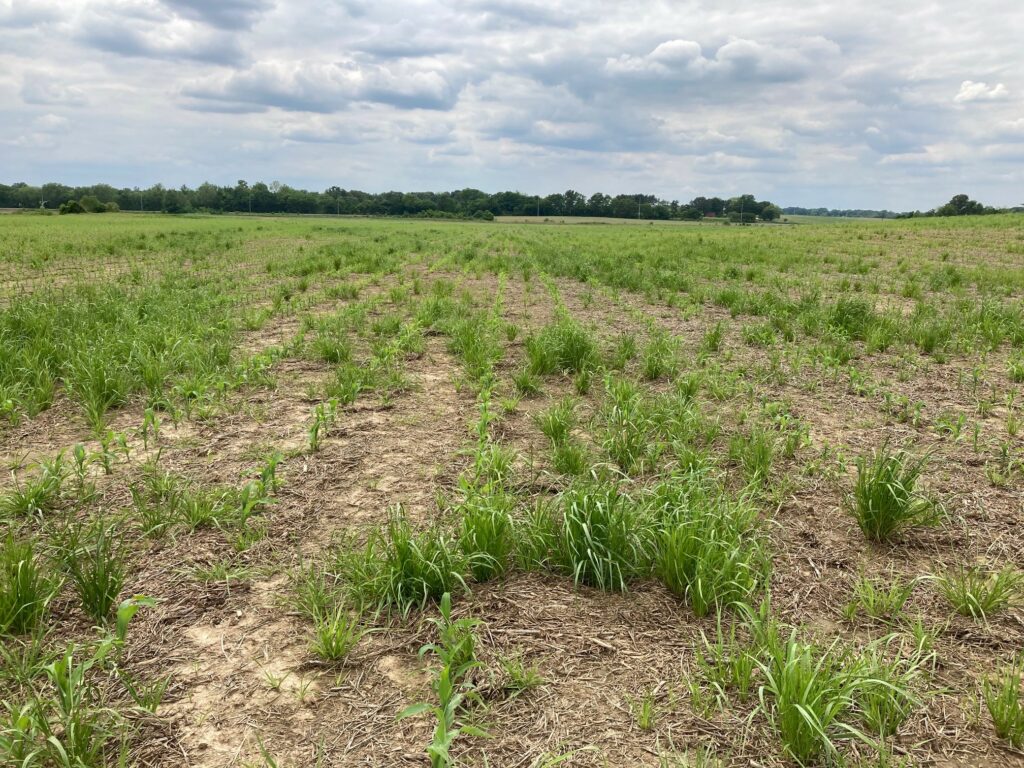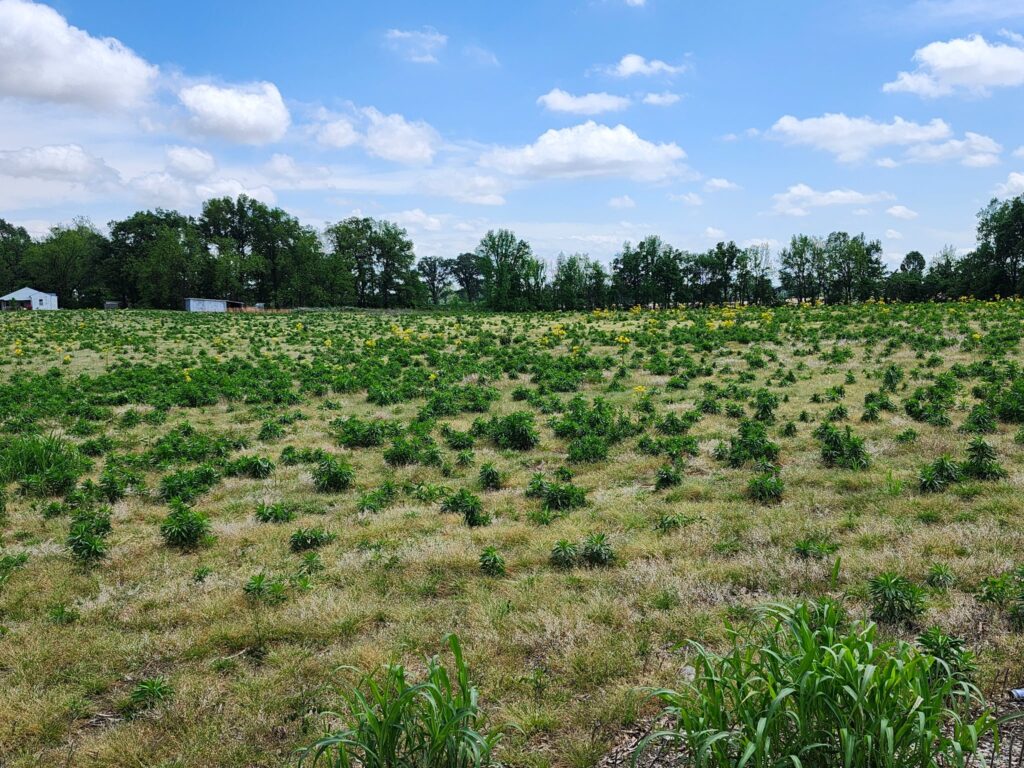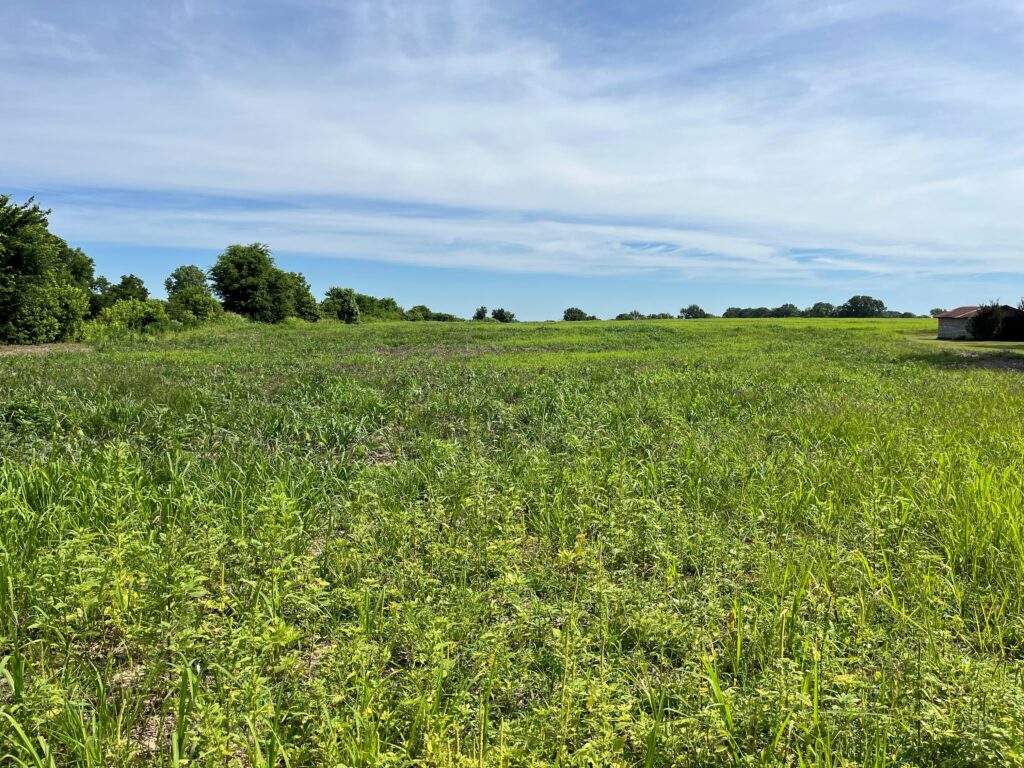

What began in March as a quick start to the planting season has with the many frequent rain events turned into a very slow struggle. The question of the hour is on how to burndown fields that are grown up messes before planting soybeans (Picture 1 and 2). There are strategies that can tackle fields that are heavily infested with 3’ tall goosegrass, Palmer amaranth, horseweed and volunteer corn. They typically require some kind of sequential application to be successful.
Paraquat, the usual “go to” for late spring burndown, will not control grasses with size, horseweed or even pigweed that has gotten so far out of hand. As such, the best approach is aggressive tillage. That unfortunately is not an option on our highly erodible fields.
In those cases, a tankmix of a high rate of Liberty plus clethodim is the best approach to try to control the grass weeds, horseweed and set the pigweed back. Then, if possible, a couple days later apply paraquat. This approach would have the best chance of success with herbicides.
In fields where the soybeans may emerge before a follow-up paraquat application could take place then Liberty tankmixed with Enlist should take out any escaped broadleaves. If grass seems to be recovering then apply Liberty plus clethodim.


